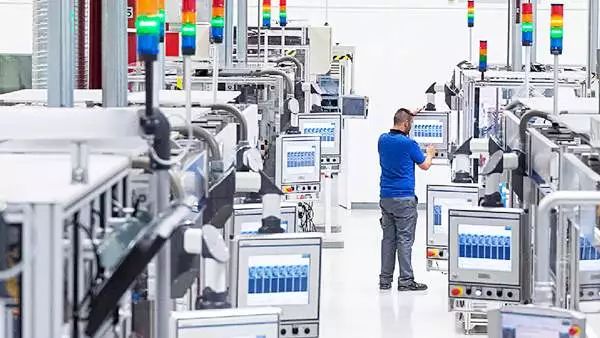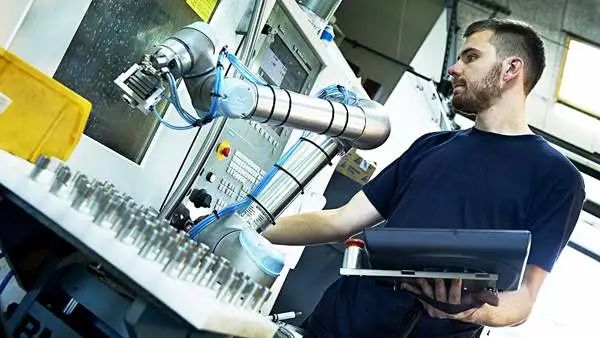Intelligence is the most important trend in the manufacturing industry in recent years. After going through several years of market education, the degree of market inquiry has started to increase in the past two years. Since 2016, the IT industry has started an artificial intelligence (AI) boom, AI and the Internet of Things. The integration will become the mainstream system in all vertical areas in the future. In the manufacturing industry, AI will also become one of the core computing architectures of the Industrial Internet of Things. Since Germany first spoke out of Industry 4.0, related technologies have also progressed rapidly, including technological developments such as industrial internet of things, big data analysis, and robotics, and have gradually created new types of smart factories and new industrial standards. In particular, in recent years, the wave of artificial intelligence (AI) has given new directions to the development of Industry 4.0, clearly distinguishing differences between automation and intelligence, including machine vision, deep learning, and artificial intelligence based on algorithm analysis. It has become a new trend in the future development of Industry 4.0. It not only makes the automation and robotics technology more accurate, but also the manufacturing industry has begun to enter new technological fields such as unmanned factories. Figure 1丨 Automation is the technological foundation of modern industry. AI introduction will fully enhance the benefits of automation systems. As far as the current development is concerned, there are three major trends in smart manufacturing. The first is the production network. This part mainly applies Manufacturing Operations Management (MOM) to assist suppliers in the production value chain to obtain and exchange real-time production information. All components provided by the supplier can arrive at the production line in the right order at the right time. The second trend is the perfect integration of virtual simulation and real-world physical systems. Every step in the manufacturing process will be designed, simulated and optimized in the virtual world, creating a real world for the physical world including materials, products, factories, etc. Highly-simulated digital twin (Twin Model). The third trend is the Cyber-Physical System (CPS). In this system, product information will be input into the product components themselves. They will directly communicate with production systems and equipment according to their own production requirements. The next production process instruction is issued, and the command equipment organizes production on its own. This independent production mode can satisfy each user's customized requirements. Build an operation pattern with big data The three major trends mentioned above will be integrated with AI in the future. For example, in the production line monitoring, robotics, unmanned vans, etc., there will be AI computing function design, mainly due to a large number of customized trends, factories need to face The difficulty of various production scenarios such as product types and production line mobilization will also increase. Although sensors and big data analysis allow managers to have more information to help decision-making, they also increase the amount of information. , increase the information analysis pressure of managers, coupled with faster and faster market changes, the speed of human analysis may have been more difficult to keep up with the front-end data to provide faster and faster, naturally it is even more difficult to make the machine on the manufacturing site Taiwan can quickly respond to customer needs, and AI can be used in manufacturing. It will allow the system to identify patterns of regularity from big data analysis, and then learn to avoid mistakes in the past. It can even predict in advance and apply it to the manufacturing field. Not only can it be shortened. Downtime can also be adjusted at the right time to reduce production and scrap. Figure 2: The connection network is the foundation of the industrial IoT architecture. In the future, AI will analyze the large amount of data obtained by the equipment network and make intelligent judgments and recommendations. For industrial IoT, acquiring data and analyzing data is a core task, and data points from sensors can be transformed into actionable insights through multiple stages. The industrial IoT platform includes scalable data processing processes that can handle immediate needs. Concerned real-time data, and meaningful data only for a period of time. After detecting anomalous combinations of pressure and temperature thresholds, it may be too late for the IoT platform to shut down the liquefied petroleum gas filling machine. It should be detected within milliseconds. To abnormal, and then trigger an immediate response according to the rules. As far as the current development is concerned, AI has several algorithms. For example, the core of hotspot path analysis is the rule engine responsible for detecting abnormalities. The IoT platform embeds a complex rule engine that can dynamically evaluate complex patterns from the sensor data stream and understand the patterns. Domain experts in the data format define the rule engine's baseline thresholds and routing logic. This logic is used as the key input to the rules engine in orchestrating the message flow. Before the data point is moved to the next stage of the data processing flow, it is defined for each data point. Nested statement conditions, the rules engine has become the core of the Internet of Things platform, and one of the key areas of machine learning is to find patterns from existing data sets, group similar data points, and predict the value of future data points. Machine learning related high-level algorithms can be used for classification and predictive analysis. Since these algorithms can learn from existing data, and most of the Internet of things data are based on time series, these algorithms can predict the future value of sensors based on historical data. The combination of these various machine learning algorithms will replace the traditional rules engine in the industrial IoT platform. Although domain experts still need to act according to the definition of conditions, these intelligent algorithms provide higher accuracy and accuracy. AI + HI significantly increases efficiency One of the biggest applications of machine learning in the industrial Internet of things is predictive maintenance of equipment. It predicts equipment failures through correlation and analysis model changes, and reports key indicators such as the remaining useful life of the equipment. Predictive maintenance can also be applied in the future. In areas such as aerospace, manufacturing, automotive, transportation, logistics, and supply chain, such as predictive model arrangements to automotive service centers, in the aviation industry, the goal of predictive maintenance programs is to predict flight delays based on relevant data such as maintenance history and flight route information. Or cancel the possibility. Figure 3: In the industrial field, AI and HI must work together to create maximum value for the system. Observe the development trend of the Internet of Things. At present, industrial IoT is one of the fastest-growing categories in all vertical applications. AI is mainly to assist operators and managers in industrial IoT, filter data extracted from a large number of devices, and do Judgment, but the current AI can not make a logical decision, so in the manufacturing field, AI must be combined with human intelligence, it will be the best system benefits. Vacuum Cleaner Brushless Motor-BLDC Vacuum Cleaner Brushless Motor-Bldc,Brushless Motor Cordless Vacuum Cleaner,Brushless Motor Vacuum Cleaner,Vacuum Cleaner For With Brushless Motor Zhoushan Chenguang Electric Appliance Co., Ltd. , https://www.vacuum-cleaner-motors.com


